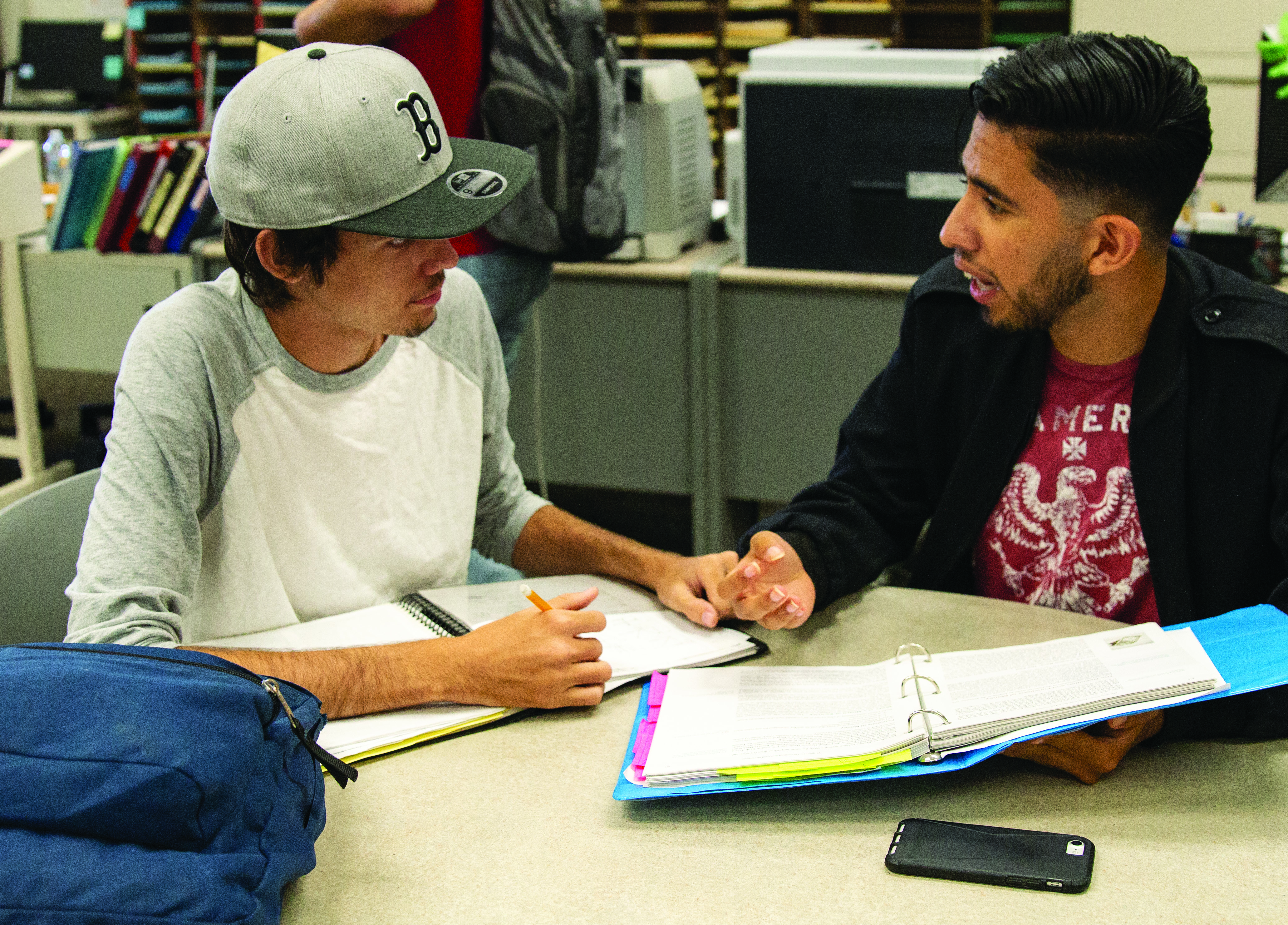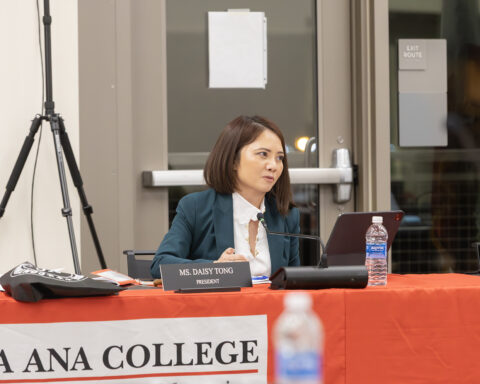
The district will receive a much-needed influx of dollars over the next two years as roll out begins on a state-approved funding model that rewards student success as well as enrollment.
Despite decreasing numbers in enrollment, Rancho Santiago Community College District still graduates or transfers more than 8000 students per year, district data shows.
“We are a winner district. Other districts aren’t getting more performance dollars,” said RSCCD Vice Chancellor of Business Services Peter Hardash of the state’s new Vision for Success plan.
Community colleges currently earn money through raw enrollment numbers, receiving about $6,500 per full time student and an additional $1300 for students under the California College Promise Grant (formerly the Board of Governors Fee Waiver). The Vision For Success plan includes a funding formula that will increase those amounts by about $1700 per degree, certificate or transfer degree awarded during the 2018-2019 school year.
The new Student Success Funding Formula shifts funding from a purely enrollment-based focus to a partially performance-based focus, creating more pressure for community colleges to produce graduates, transfers and certificate holders. The new funding model will be rolling out in phases over the next three years, increasing success dollars each year as it unfolds.
Hardash said that lower graduation and transfer rates would impact district offices before classrooms.
“We should be reinvesting these additional dollars in order to provide more services, more tutoring, more counseling, to do an even better job,” Hardash said. “And if we do an even better job then we get even more funding.”
But some students say community college isn’t only about graduating. There are other benefits, like participating in clubs and groups or getting additional training for a career.
“Cutting funding just because people don’t go and graduate…is a very poor decision,” said third-year SAC student Mitchell Valentine.
Over 65 percent of all students at SAC last year paid no tuition, while nearly two-thirds of students enrolled in at least two classes received financial aid, according to the Financial Aid office. Any additional tuition and textbook costs not covered by financial aid, however, are the full responsibility of the student and their family.
The state is also aware that students have to keep up with their personal lives as well as their college life but have yet to determine how to factor that into the new funding model.
“Students need to pay for books and keep their lights on in the house,” said Laura Hope, Executive Vice Chancellor for Educational Services of California Community Colleges. “We are currently working on a package of financial aid reform that will help students bear the burden of working.”
Additional reporting: Aron Hernandez
- How Guided Pathways Will Redesign Community College - December 10, 2018
- Eminem Throws Shade with Meaty Disses on Kamikaze - October 4, 2018
- Officials Are Increasing Funding for Community Colleges That Graduate More Students - October 3, 2018














